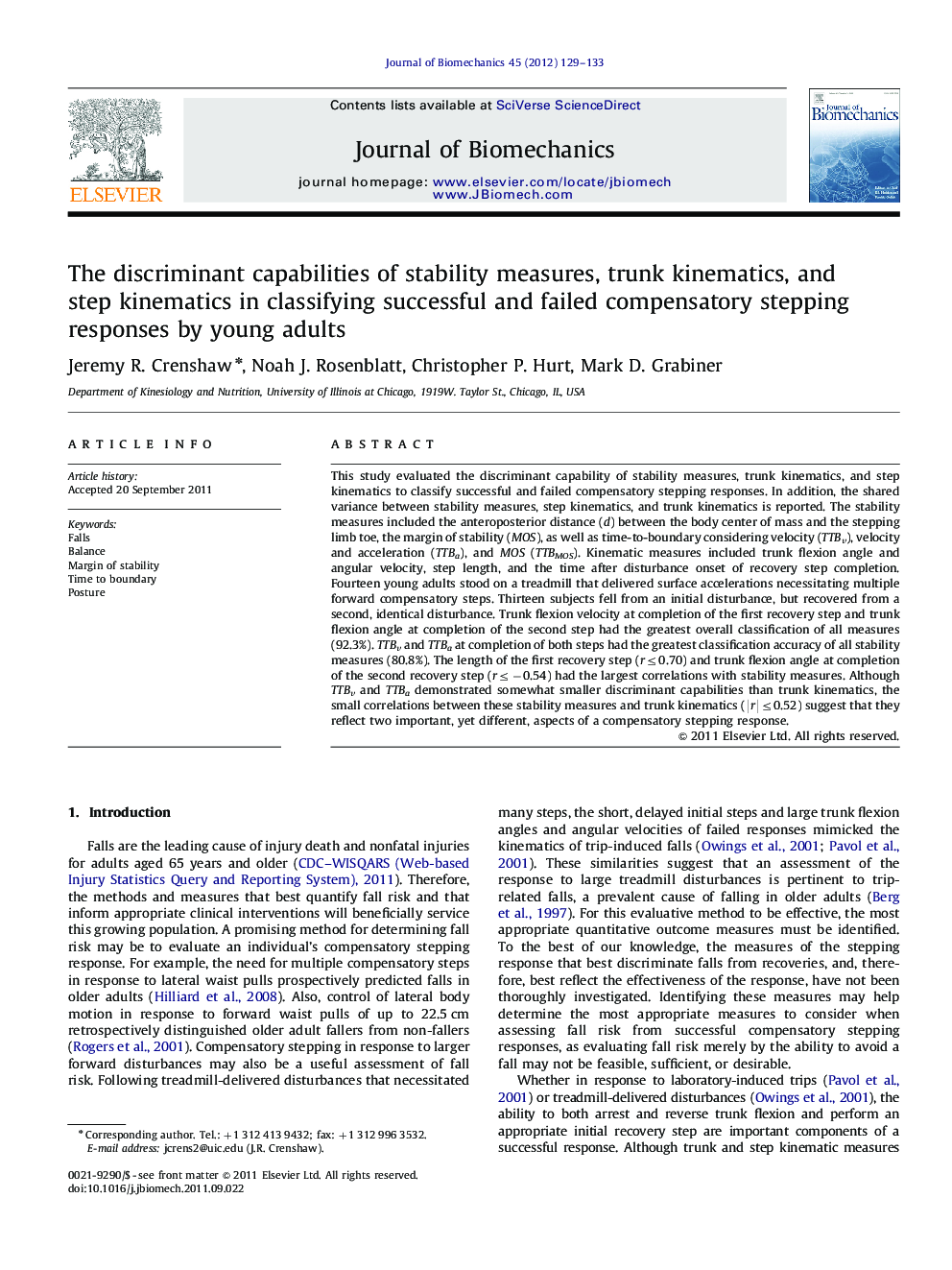| کد مقاله | کد نشریه | سال انتشار | مقاله انگلیسی | نسخه تمام متن |
|---|---|---|---|---|
| 10432538 | 910251 | 2012 | 5 صفحه PDF | دانلود رایگان |
عنوان انگلیسی مقاله ISI
The discriminant capabilities of stability measures, trunk kinematics, and step kinematics in classifying successful and failed compensatory stepping responses by young adults
دانلود مقاله + سفارش ترجمه
دانلود مقاله ISI انگلیسی
رایگان برای ایرانیان
کلمات کلیدی
موضوعات مرتبط
مهندسی و علوم پایه
سایر رشته های مهندسی
مهندسی پزشکی
پیش نمایش صفحه اول مقاله

چکیده انگلیسی
This study evaluated the discriminant capability of stability measures, trunk kinematics, and step kinematics to classify successful and failed compensatory stepping responses. In addition, the shared variance between stability measures, step kinematics, and trunk kinematics is reported. The stability measures included the anteroposterior distance (d) between the body center of mass and the stepping limb toe, the margin of stability (MOS), as well as time-to-boundary considering velocity (TTBv), velocity and acceleration (TTBa), and MOS (TTBMOS). Kinematic measures included trunk flexion angle and angular velocity, step length, and the time after disturbance onset of recovery step completion. Fourteen young adults stood on a treadmill that delivered surface accelerations necessitating multiple forward compensatory steps. Thirteen subjects fell from an initial disturbance, but recovered from a second, identical disturbance. Trunk flexion velocity at completion of the first recovery step and trunk flexion angle at completion of the second step had the greatest overall classification of all measures (92.3%). TTBv and TTBa at completion of both steps had the greatest classification accuracy of all stability measures (80.8%). The length of the first recovery step (râ¤0.70) and trunk flexion angle at completion of the second recovery step (râ¤â0.54) had the largest correlations with stability measures. Although TTBv and TTBa demonstrated somewhat smaller discriminant capabilities than trunk kinematics, the small correlations between these stability measures and trunk kinematics (|r|â¤0.52) suggest that they reflect two important, yet different, aspects of a compensatory stepping response.
ناشر
Database: Elsevier - ScienceDirect (ساینس دایرکت)
Journal: Journal of Biomechanics - Volume 45, Issue 1, 3 January 2012, Pages 129-133
Journal: Journal of Biomechanics - Volume 45, Issue 1, 3 January 2012, Pages 129-133
نویسندگان
Jeremy R. Crenshaw, Noah J. Rosenblatt, Christopher P. Hurt, Mark D. Grabiner,